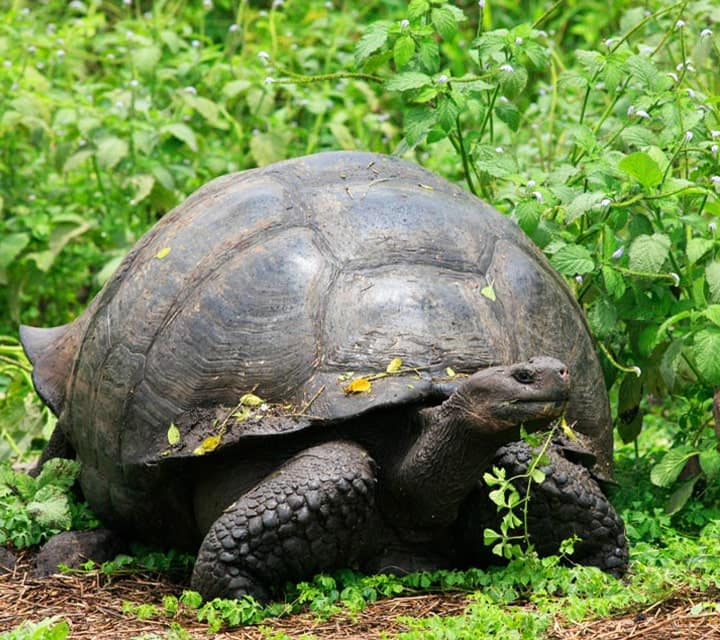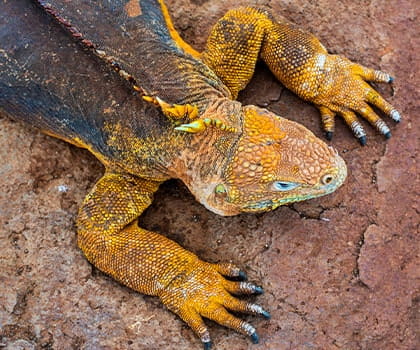
A type of giant Galapagos tortoise that was thought to be extinct has been “found” in the genome of a similar species. This species, known as Chelonoidis elephantopus, lives in the genome of its close relative which currently lives in the Galapagos Islands.
Chelonoidis elephantopus has never again been seen by visitors or scientists in the Galapagos Islands since Charles Darwin recorded a sighting of this species. It was believed that the species had been wiped out by pirates and whalers in the mid 1800's. They used these animals as a valuable food source on their boats as they could survive without food or water for up to a year. Giant Galapagos tortoises can weigh almost 900 lbs (408 kg) and reach a length of almost 6 ft (1.8m).
This species was originally from Floreana Island, the second southernmost island in the archipelago and the most frequented by whalers and pirates, in the 1800’s. However, a study of over 1600 tortoises on Isabela Island (the largest island in Galapagos and found 200 miles northwest of Floreana Island) revealed the presence of the DNA of Chelonoidis elephantopus on its very close relative, Chelonoidis becki.
Chleonidis becki and Chleonidis elephantopus have different shaped shells. Whereas the shells of C. becki are domed-shaped, the shells of C. elephantopus were saddle-shaped. In 2008 several specimens of C. becki were observed to have more saddle-shaped shells, an investigation began to determine the cause of this difference. A DNA examination of these variations revealed that they had to have had at least one parent which was a member of C. elephantopus.

A final study showed that the genes of these variations were significantly different from those of other Galapagos tortoises on the Island. Scientists estimate that at least 38 tortoises in their study could be purebred members of C. elephantopus) and so the conclusion is that the species is not extinct. 30 of the tortoises whose DNA contained DNA from C. elephantopus were found to be less than fifteen years old and since the avg lifespan of a Galapagos tortoise is 100 years, researchers say that there is a strong chance that their C. elephantopus parent may still be alive on Isabela.
Researchers are not sure how C. elephantopus tortoises ended up on Isabela Island, almost 200 miles away from Floreana. Unlike sea turtles, Galapagos tortoises cannot swim well. Their best guess is that pirates and whalers hauled them from one island to the other, or that some were thrown overboard when passing close to Isabela Island.








